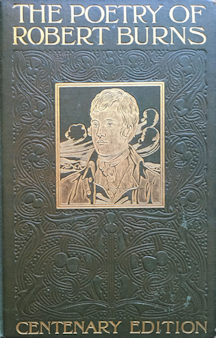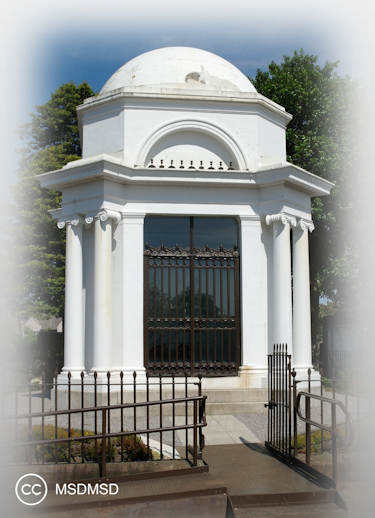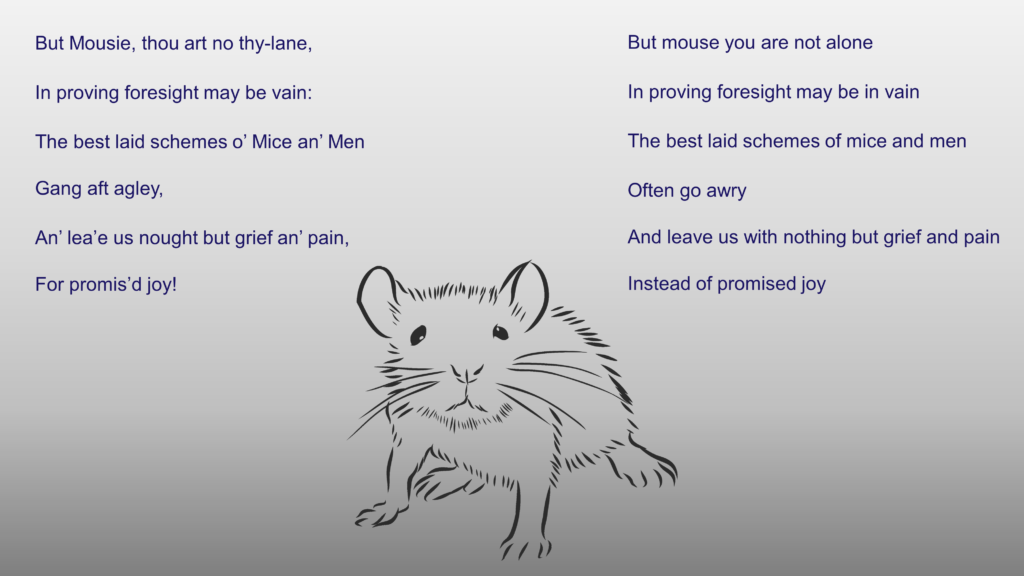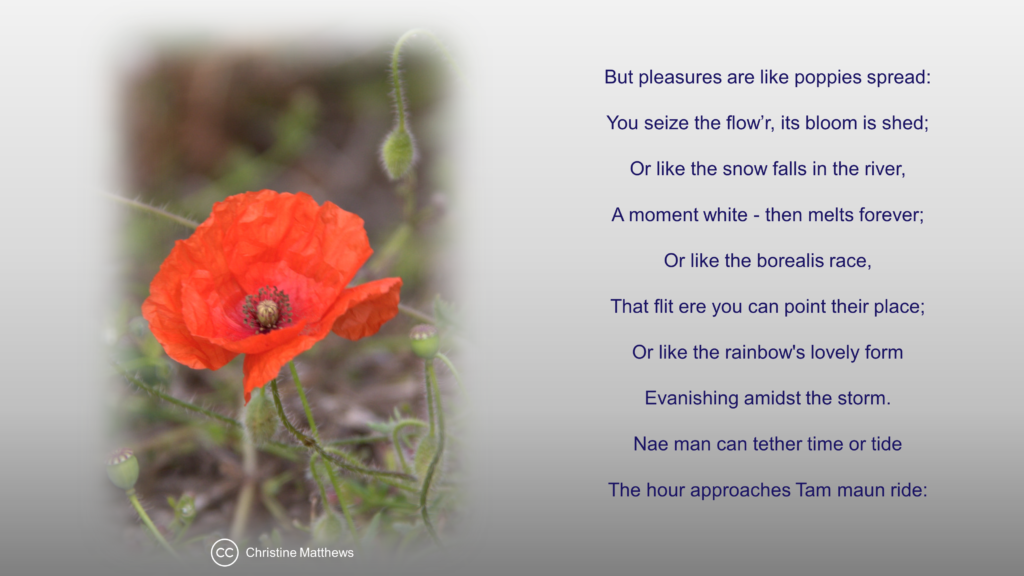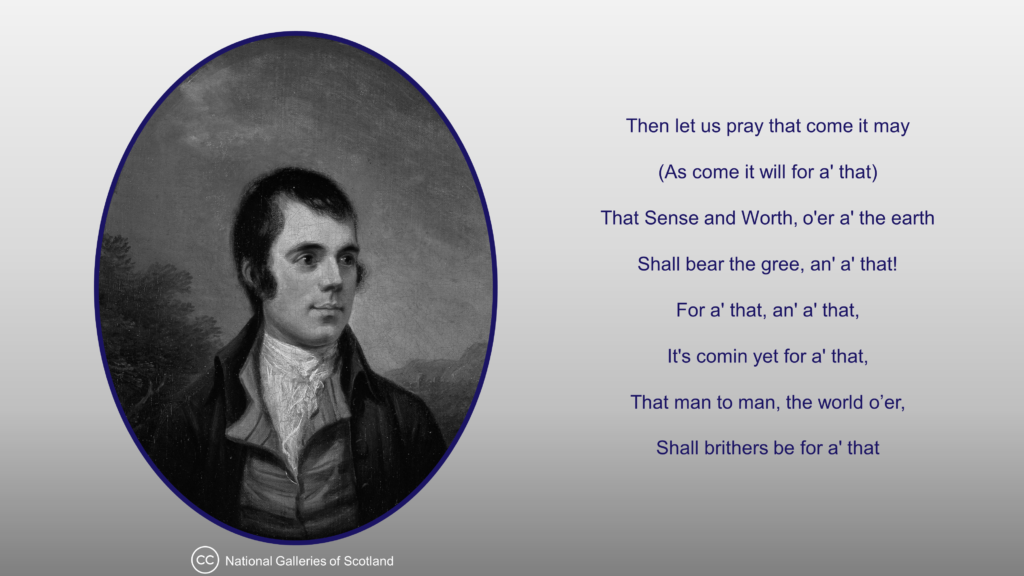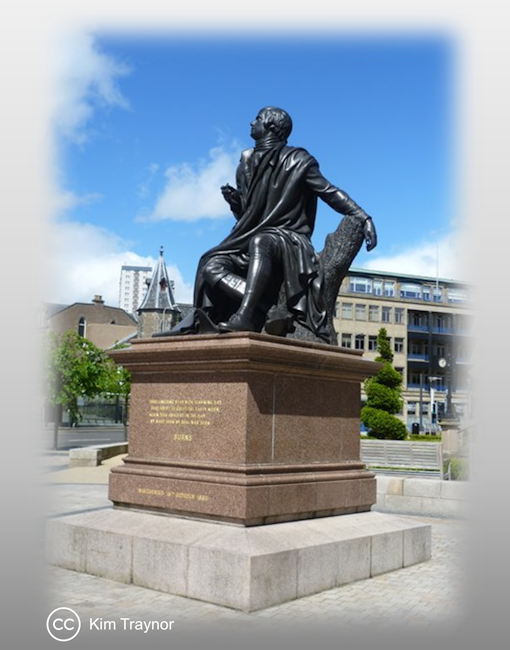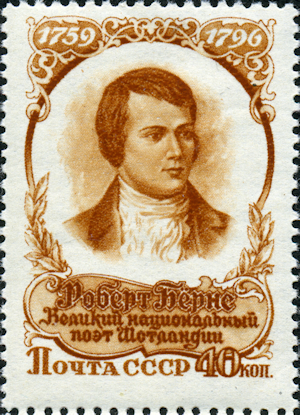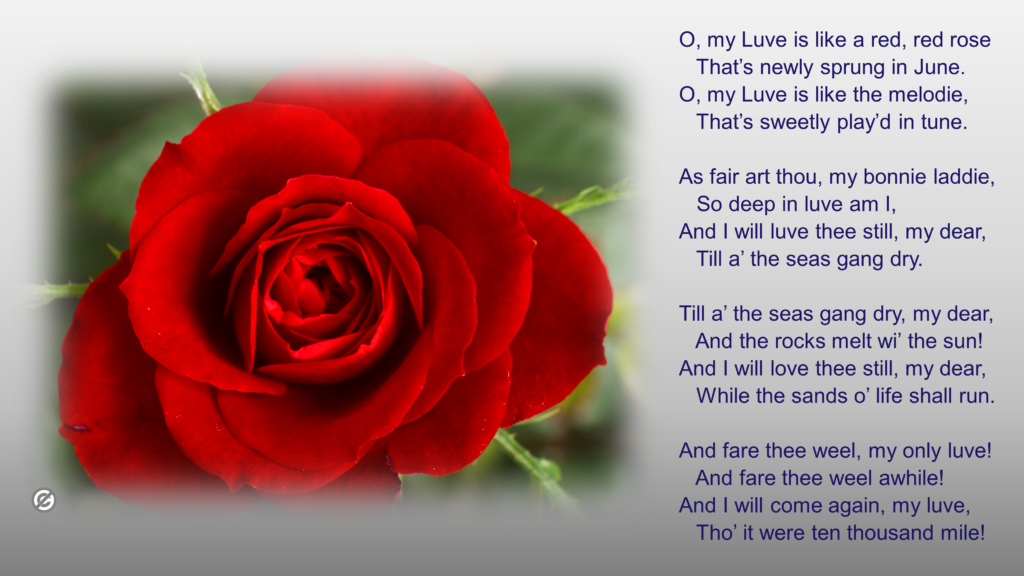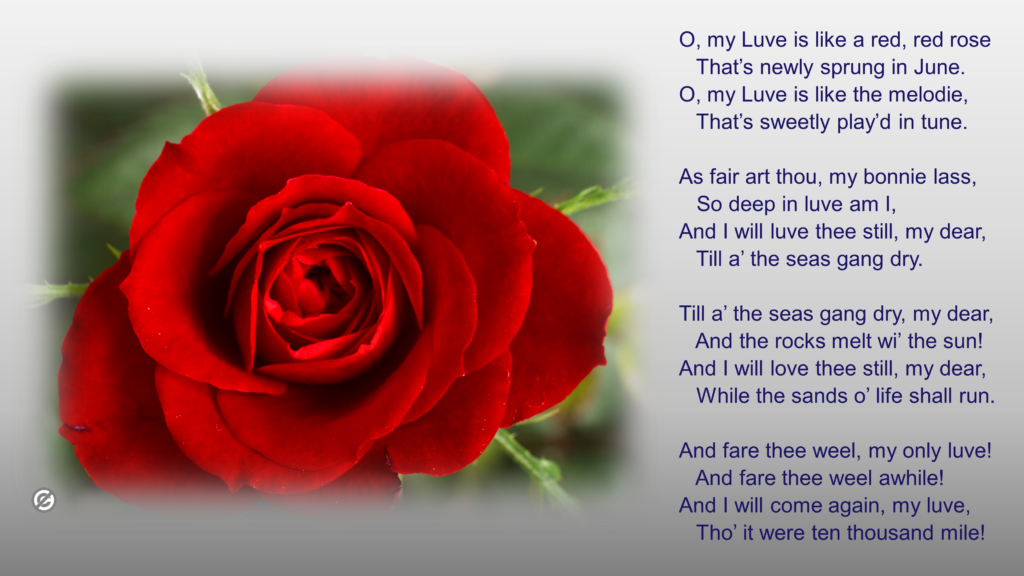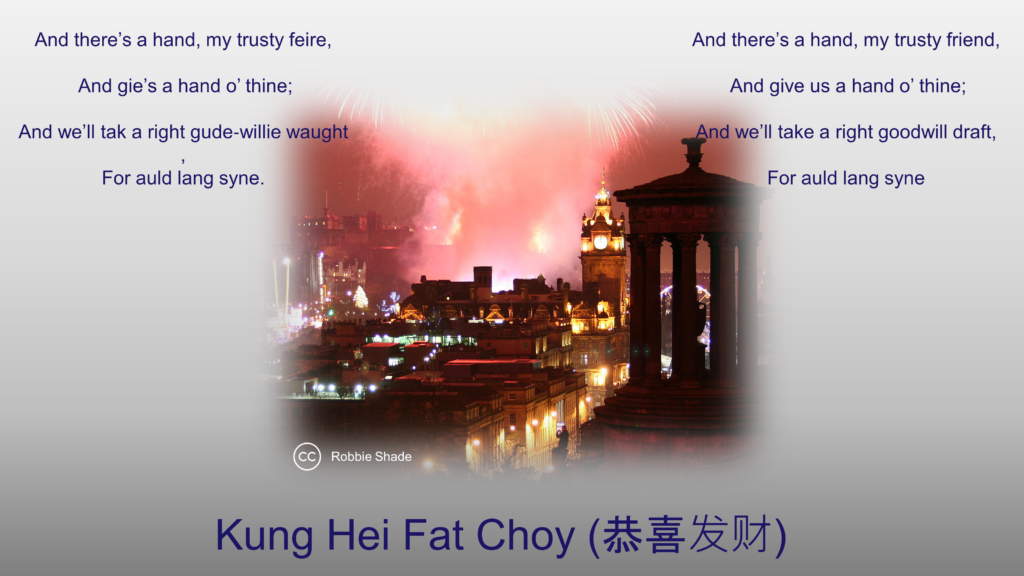Introduction
January 25th was the birthday of Robert Burns, Scotland’s National Bard.
263 years ago, Robert Burns was born in Alloway, Scotland, into humble circumstances, but by the time of his early death at 37 he was an established figure in Scotland and on his way to world fame.
This weekend there will be celebrations of his life and works, not only in Scotland but in places as diverse as USA, Russia and China.
I would like to draw lessons and inspiration from a few of his over 600 songs and poems.
You may not be familiar with Burns, but I am sure that you have heard a number of sayings derived from his work.
You may even have unknowingly heard or sung one of his songs. (Auld Lang Syne, traditionally sung and played at New Year celebrations)
Early Life
Burns was the oldest of 7 children.
His father George Burnes1 and Mother Agnes Burnes (nee Broun) struggled to provide a good life for their children. Despite this Burns received a reasonable education, a combination of home schooling, external tutors and various formal schools, dependent on circumstances.
His father was responsible for the more formal aspects, but his mother regaled him with local folk songs and tradition.
In later life as well as composing his own poetry he collected and refined local songs preserving them for later generations.
Like most agricultural children of the time his education revolved around the need for seasonal labor on the farm.
The Break-Through
As a young man Burns continued to work in agriculture but life was hard.
By 1786 he had fathered a child with his mother’s servant, and was courting Jean Armour, who also became pregnant with twins. Although Burns agreed to marriage Jean’s father tore up the agreement and sent her away to avoid disgrace. Her father also took out a warrant and Burns hid in various friends hoses to avoid arrest.
Around this time, he accepted a job offer on a plantation in Jamaica.
Given his egalitarian worldview is surprising that he would contemplate working on a slave plantation. Clark McGinn in a 2015 article gives a good overview of the situation5.
Around this time a friend suggested that he publish his poems.
What became known as the Kilmarnock Edition was published in July 1786 and was an instant success. An Edinburgh edition was published the following year, and all thoughts of going to the West Indies were forgotten.
Eventually Robert and Jean married in 1788, they had eight children but only three lived to be adults. Despite his marriage Burns continued to have affairs for the remainder of his life.
He returned to farming for some time, but eventually became an exciseman. (Customs Official)
Death
Burns died, probably due to a heart condition, 21st July 1796, and was buried in a simple grave in Dumfries.
His remains were eventually relocated to a mausoleum in 1817 and his legend continued to grow.
The Poems
I will look at four poems and try to draw some inspiration for managers and leaders.
- To a Mouse
- Tam O’ Shanter
- To a Louse
- A Man’s a Man for a that
To a Mouse
The poem was written in November 1785 after Burns destroyed the mouse’s nest whilst plowing, sending it scurrying around in a blind panic.
It is a timely reminder to project managers that plans often go awry.
In fact, they nearly always do to some degree.
However, unlike the mouse we have the ability to build-in contingency, assess risk, and keep calm and carry-on.
We will do well to remember the advice of General Eisenhower if we want to avoid panic.
“I have always found that plans are useless, but planning is indispensable”
Fun Fact: This poem was the inspiration for the title of Steinbeck’s novel “Of Mice and Men”
Tam O’ Shanter
Tam O’ Shanter is a cautionary tale about Tam, who after drinking too much on market day, finally has to head for home on his trusty horse Meg.
On the way home he encounters a gathering of witches, and in his inebriated state shouts out and reveals his presence.
The witches give chase.
Tam spurs Meg into a desperate gallop towards the bridge over the river Doon.
(It was believed that witches could not cross flowing water.)
But just as she and Tam reach the bridge keystone and safety, the leading witch grabs Meg’s tail leaving her with only a stump.
Most of the poem is written in Scots, but as the above verse shows Burns was also an expert in standard English verse.
It eloquently reminds us that we can so easily lose track of time
As a project manager this verse helps me focus on the need to execute, and the illusion that I can always control time.
To a Louse
Next up comes a poem with the engaging title; “To a Louse”
Whilst sitting in church Burns noticed a large well fed louse crawling in the hair and hat of a high-born lady.
It takes the form of an imagined conversation with the creature.
He wonders if it should not be infecting a lowlier person, but clearly the louse is an equal opportunities parasite.
The fine lady is unaware of her passenger, and Burns ends the poem with:
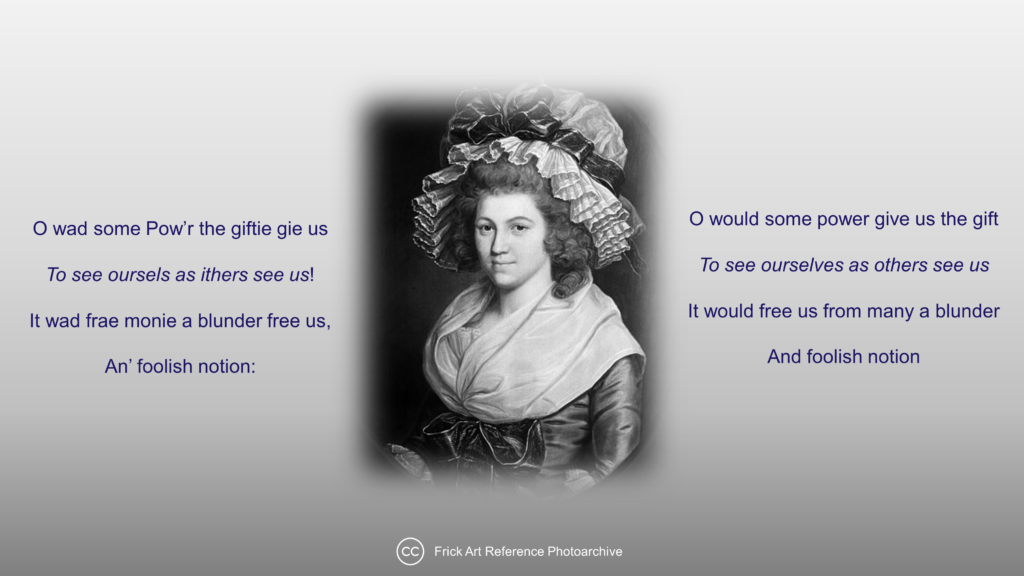
As project managers and leaders this verse is truly relevant.
It is so easy to become convinced of our own importance, and often people will tell us what they think we want to hear, reinforcing our delusions
We must strive to create an atmosphere of trust that makes it easy for people to be honest and tell us what we need to know.
Also, the identification and cultivation of an informal network, as championed by Innovisor, may make it easier for us
“To see oursels as ithers see us”
My thanks to Jeppe Vilstrup Hansgaard of Innovisor for the suggestion that The Johari Window is an excellent tool for this purpose. There are a number of sites online that detail how to use the window.
He also shared a Innovisor blog post that looks at lack of executive awareness.4
A Man’s a Man for A That
Our final quotation is from the poem “Is There for Honest Poverty”
but is more often known as “A Man’s a Man for A’ That.”
The poem expresses Burns’ egalitarian ideals.
It disparages wealth and privilege and upholds the values of honesty and independence of mind.
Although written over two hundred years ago the sentiment and ideals still resonate today, and account for Burns’ global popularity.
As project managers and leaders, it is a great tool to focus our attention on what and who is important.
Character matters!
Conclusion
Today Burns is a world-renowned figure and according to the Cumnock Chronicle2 there are more statues of Robert Burns around the world, than any non-religious figure, with the exception of Queen Victoria and Christopher Columbus.
In Scotland he appears on bank notes (bills).
In the UK, The Royal Mail has issued three sets of Burns postage stamps.
Ironically it was the Soviet Union who issued the first Burns commemorative stamp in 1956.
A measure of his stature is the fact that he was one of only a few individuals that straddled the Cold War, being very popular in both the USA and USSR.
An Scottish Television poll in 2009 voted him “The Greatest Scot of All Time”, just ahead of William Wallace.
This weekend there will be celebrations around the world with traditional Burns Suppers.
This is not limited to the English-speaking world but encompasses every continent.
During research for this post, I discovered an interesting event.
Gung Haggis Fat Choy3, which is advertised as a Scottish Chinese fusion.
Having a Cantonese mother-in-law, I immediately recognized the adaption of the traditional New Year greeting
Kung Hei Fat Choy (恭喜发财), basically meaning have a Happy and Prosperous New Year.
In1998 Todd Wong (Toddish McWong) of Vancouver realized that the Lunar New Year occurred a few days after Burns Night (January 25th) and decided to create a combined celebration.
What started as a small event has grown into a tradition but is currently constrained to virtual, due to the pandemic.
Hopefully when the pandemic is over Juliet, and I can travel to Vancouver for the event and help advance Burns’ ideal
That man to man, the world o’er,
Shall brithers be for a’ that
Lessons for Project Managers
So! What have we Learned?
- The best laid schemes of mice and men often go awry.
We always knew that. However, imagining that wee moosie scurrying around in a panic as its life’s work is destroyed may help focus us.
- No man can tether time nor tide
Burns beautifully illustrated how easily we lose track of time.
- How useful it would be to see ourselves as others see us
This one is not so obvious. We need to be aware of how easily we can fool ourselves. Be like Marcus Aurelius and find someone to whisper in your ear “you are just mortal”.
- A man’s a man for a’ that
In this global age of diverse project teams, we need to continually be aware that it is not about rank or status. Character matters – develop your teams around honesty and independence of mind.
If you are thinking so what I don’t need all poetry stuff
Let me close with Robert Burns most famous love poem.
Next time you are away from home on project business you may want to send your loved one a copy. (I have done a Lass and a Laddie version so whatever your gender or orientation it should work. Feel free to copy the image). By the way if you do not normally do this you may want to work-up to it.
For Auld Lang Syne (For Old Time’s Sake)
As I close the Lunar New Year is only two days away, so I would like to wish everyone a happy year of the Tiger.
NOTES
1Robert changed the spelling of his name from Burnes to Burns.
2 Robert Burns statues from around the world | Cumnock Chronicle
4Who is to Blame for the Disconnect Between Employees and Executives? – Innovisor
5 Robert Burns and Slavery | Scotland.org
BIBLIOGRAPHY
- The Poetry of Robert Burns – Centenary Edition (1896) 4 Volumes
Note: There are various versions of Burn’s poems in print or available online.
I have chosen to use the wording and punctuation in the above title for this post


